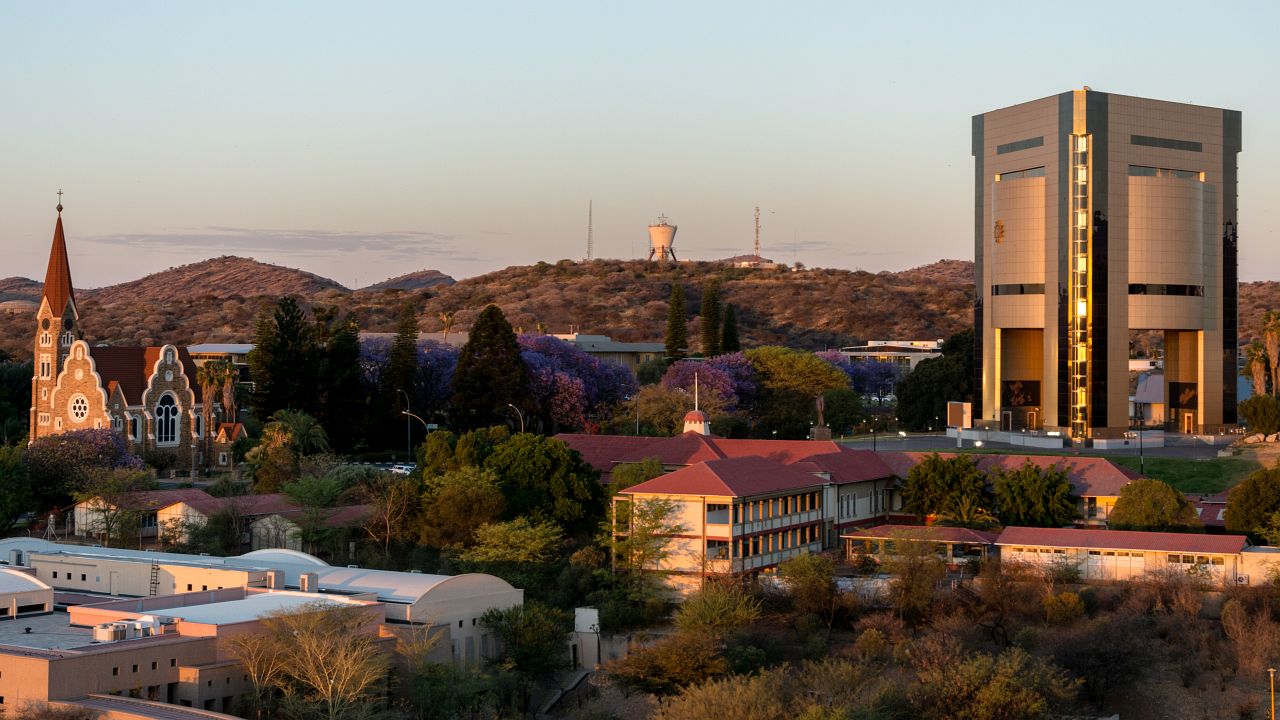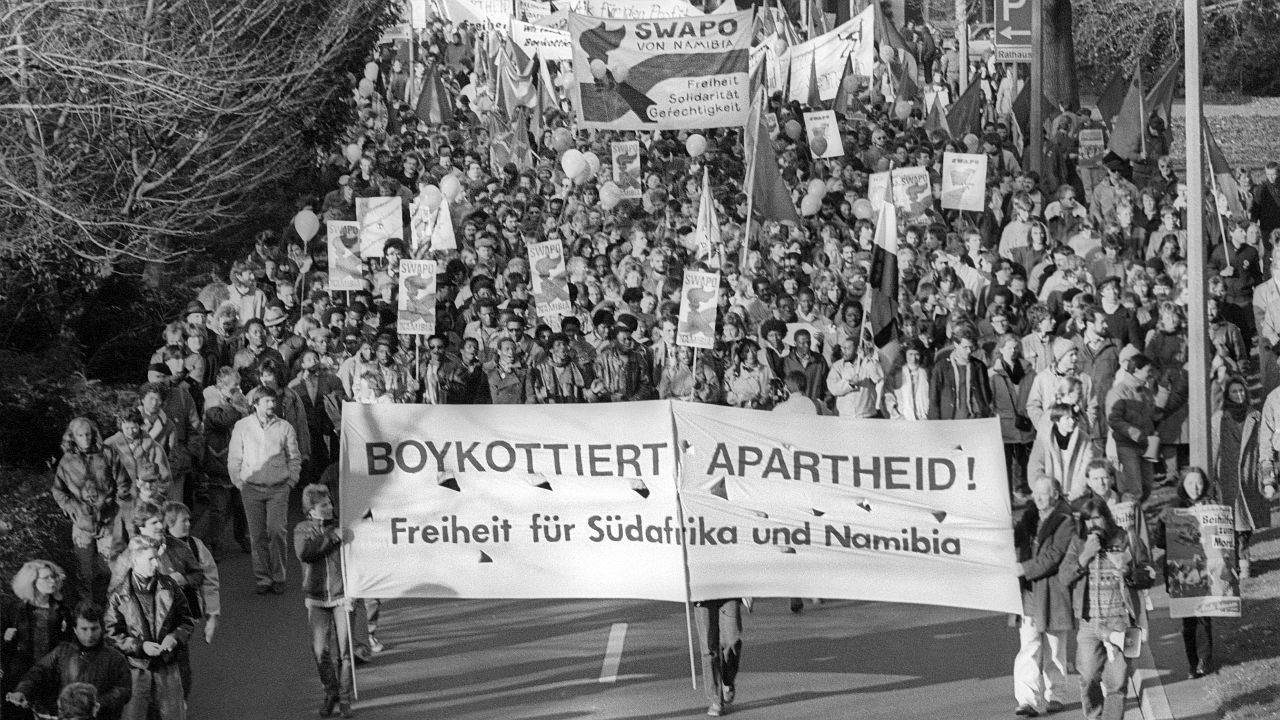Namibia@30
Namibia turns 30 this year. The celebration of this milestone anniversary is an opportune moment to take a close look at the developments of Namibian society and politics since the exuberance of the country’s day of independence.
“At midnight of 21 March 1990, all across Namibia church bells rang in the country’s long-deferred national independence. Tens of thousands had gathered that balmy late summer’s night in the Windhoek Athletics Stadium, soon to be renamed Independence Stadium, where the new nation’s flag was raised for the first time to the crowd’s loud cheers. South African President F.W. De Klerk—watched by Nelson Mandela, released from prison just over a month earlier—was quite alone in saluting his country's flag, hand on heart. The triumphant joy was palpable. Even some cabinet ministers-to-be joined in the resounding “down, down” jeers when the Vierkleur, the pre-1994 South African flag, was brought down, and the new Namibian flag fluttered in the night wind.”

Namibia gained its independence after a bitter, decades-long struggle against South African rule. The author of a comprehensive historical overview of Namibian history up to 1990, the historian and a former solidarity activist with the British Namibia Support Committee, Marion Wallace, summarises the country’s delayed route to Independence aptly: “The transition took place a quarter-century after decolonisation swept over most of the continent, but four years before South Africa itself achieved majority rule. Namibia’s colonial history was, thus, a long one: originally occupied by Germany in 1884, it was conquered by South Africa in 1915, ruled by the latter from 1921 as a Mandated Territory of the League of Nations and, after the Second World War, effectively as part of South Africa itself”.
Heike Becker is Professor of Social and Cultural Anthropology at the University of the Western Cape (UWC) in South Africa. She was previously a researcher and lecturer in Namibia, and has published widely on Namibian culture, society and history. She is the author of Namibian Women's Movement 1980 to 1992: From Anti-colonial Resistance to Reconstruction.
The repercussions of colonial conquest and the genocide Germany committed against the peoples of southern and central Namibia are still powerful today. In 1904 and 1905 the Ovaherero and Nama rose up against colonial rule and dispossession in what was then called German South West Africa. The revolt was brutally crushed. By 1908, 80 percent of the Ovaherero and 50 percent of the Nama had died of starvation and thirst, overwork, and exposure to harsh climates. The army drove survivors into the waterless Omaheke desert. Thousands more died in concentration camps. The survivors were deprived of their land and cattle, thus laying the foundation of structurally unequal and racially determined land ownership.
Following imperial Germany’s defeat in World War I, in 1921 South Africa (representing Britain) began to govern Namibia on the legal basis of a League of Nations mandate. This was the beginning of South African rule over Namibia, during which the administration systematically applied South African policies of racial segregation and, after World War II, apartheid laws to Namibia. Like Germany before it had done, South Africa attempted to extract as much wealth as possible from its colony. To further its aims, from the early 1920s onward South Africa pursued an active settlement policy in Namibia. White South African settlers were provided land and jobs in the former German colony, the remaining German settlers were integrated into the settler population and provision was made for them to assume South African citizenship.
In southern and central Namibia the Black population was confined to “native reserves”; the South Africans thus continued the dispossession of land, which had been a central feature of German colonialism in Namibia. Northern Namibia, which had been largely left out of German colonial rule, was now brought fully into the colonial system with labour supply for the mining and commercial agriculture sectors a foremost concern. The South African administration established the distinctive migrant labour system that marked Namibia’s colonial economy and social relations until 1990. Its repercussions are still felt, with life remaining a daily struggle for the majority of Namibians.
Poverty and inequality were identified at independence as crucial challenges of independent Namibia in the Swapo government’s programme for “national reconstruction and development”. While observers such as Wallace have noted, Namibia has established itself since independence as a stable, peaceful and relatively prosperous country, there are grave concerns about some aspects of the country’s development. Three decades after 21 March 1990, this dossier revisits key questions of Namibia’s economic and socio-political developments:
What has materialized of the potential of the new nation after more than a century under German and South African colonialism? What has become of the promises of a better life for all Namibians? Has the gap between the rich and the poor in one of the world’s most unequal societies been narrowed? What is the state of national unity after a long history of racism and ethnic balkanisation? What is the state of politics in the country today?
The Swapo Party, as the former liberation movement South West Africa People’s Organisation (SWAPO), became known after independence, has been in power since 1990. Recently, however, the ruling party was challenged in unprecedented ways when it lost its two-thirds majority for the first time during the November 2019 national parliamentary and presidential elections.
Just before the 2019 elections, the Wikileaks scandal that became known as Fishrot broke. It exposed a large kickback scheme that badly shook Namibian confidence as an African country that has long imagined itself to be largely free of corruption. Two former cabinet ministers and several other senior officials stand accused of having benefitted from kickbacks and questionable fishing quota transactions, which involved an Icelandic fishing company, Namibia, and Angola. Fishrot became a catalyst for those concerned about the political and social morale of post-colonial Namibia.
In this RLS thematic dossier, Namibians reflect on the state of Namibia @30
Many of the authors are young intellectuals, academics, students, activists and artists. How do these young Namibians see their country as it celebrates its thirtieth anniversary? Over the past few years, a quarter of a century after Independence, a new generation of “born-free” Namibians have entered the country’s social and political scene. Women and men born after, or shortly before, 1990 ask penetrating new questions about their country’s development, and they insist on satisfactory responses to “old”, long-festering challenges. Similar to many other African countries, Namibia has experienced its “Fanonian moment”, as the post-colonial scholar Achille Mbembe termed this point in a country’s post-colonial history with regard to the South African student uprising of 2015–16.
In Namibia, this has come primarily in the shape of new social and political movements such as Affirmative Repositioning (AR) and the Landless People’s Movement (LPM), both founded during the past five years by young political activists, in both cases former leading Swapo Youth members. These movements started from activism around land issues and have since branched out to include broader areas of concern, such as corruption or labour conditions. The LPM has even entered parliamentary politics. Namibia has over the past few years also seen the emergence of new movements developing around post-colonial memory politics, and particularly reparations being claimed from Germany for its colonial genocide. Activist groups, mostly from the Ovaherero and Nama communities, have challenged both the German and Namibian governments in the push to make Namibia’s first colonial ruler, Germany, apologise and render reparations for the genocide committed in 1904–8. Among the activists are traditional leaders, but also long-time anti-colonial activists, academics, artists, and professionals. They call for financial reparations from Germany; they also demand a change in Namibia’s own national narratives, particularly the acknowledgment of the southern Namibian resistance against colonial conquest and the genocide in the narrative of the Namibian nation.
It has often been said that after independence Namibia’s civil society has been relatively weak. Whereas in 1987, 10,000 workers came out on 1 May for a march in Windhoek’s main township Katutura, trade unions and the movements of women, students, and township residents seemed to have faltered after independence. Is this really so? What is the state of community-based social movements and popular protests today? How are popular politics “at the grassroots” connected to the recently emerged activism of urban youth and memory activists? And what is the legacy, if any, of the earlier wave of community activism and popular protests that helped to defeat apartheid colonialism in the 1980s?
Not nearly enough has been done since independence to seriously tackle poverty and inequality, observers and social justice activists agree. Much also remains in question about the presence of the colonial past in the post-colonial present. Yet Namibia also has splendid bursts of great vibrancy. Namibian society @30 cannot simply be understood in terms of political economy. Post-colonial Namibia displays various defining features. Many “traditional” forms have proven to be resilient, however changed and reinvented. Young Namibian researchers, academics, and students are committed to critical research and innovative teaching. A lively cultural scene has emerged in post-colonial Namibia that powerfully engages issues of memory politics, decolonization, and social justice. Along with outspoken print and online media, fascinating projects in the arts have demonstrated the creative voices of mostly younger Namibian artists, especially in the visual and performative arts.
The contributors to this dossier address fundamental questions of Namibia’s developments in the political economy, in cultural production, social relations, and everyday life. The texts, and their authors, are testimony to the multifaceted vibrant reality of post-colonial Namibia.
